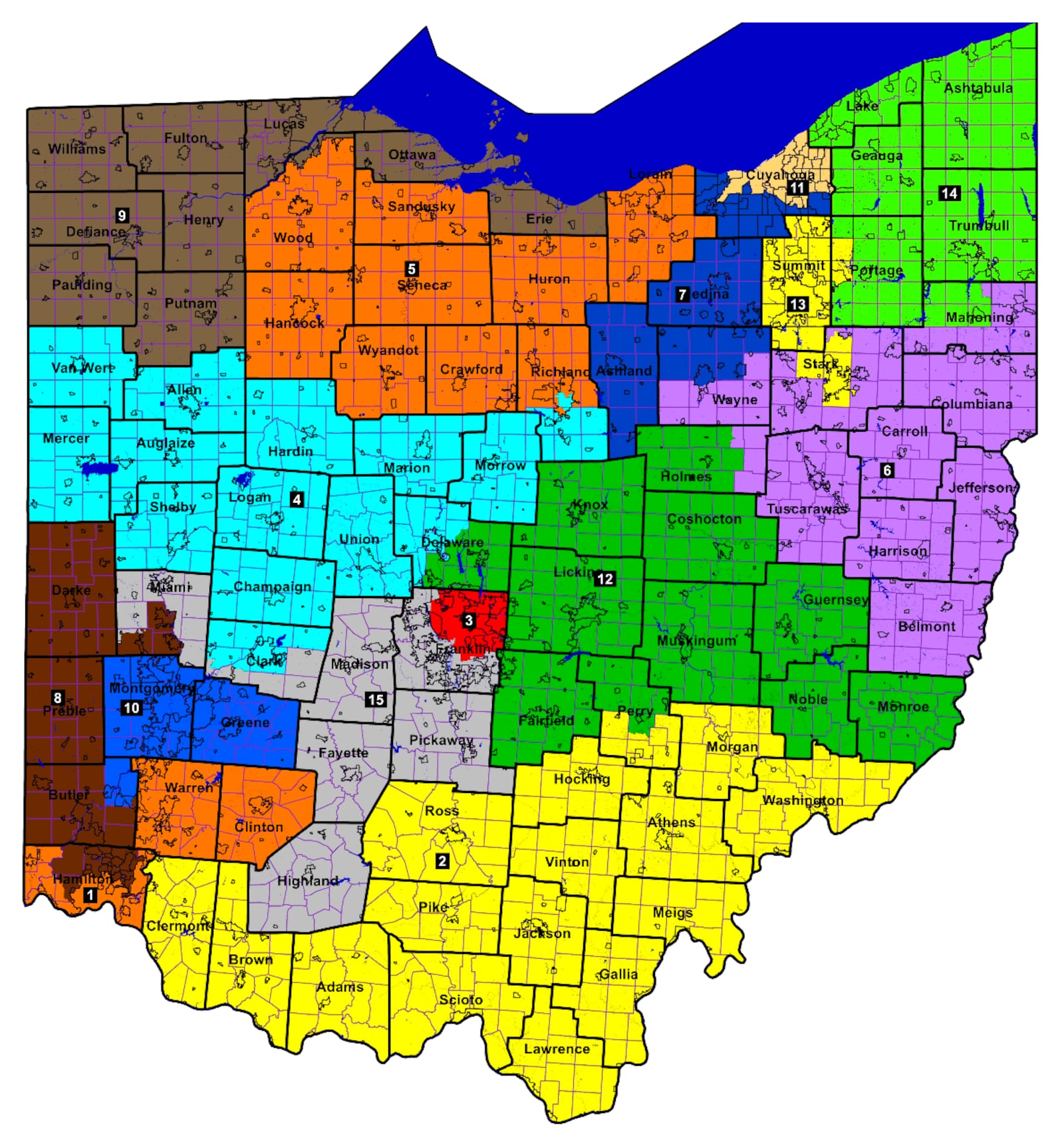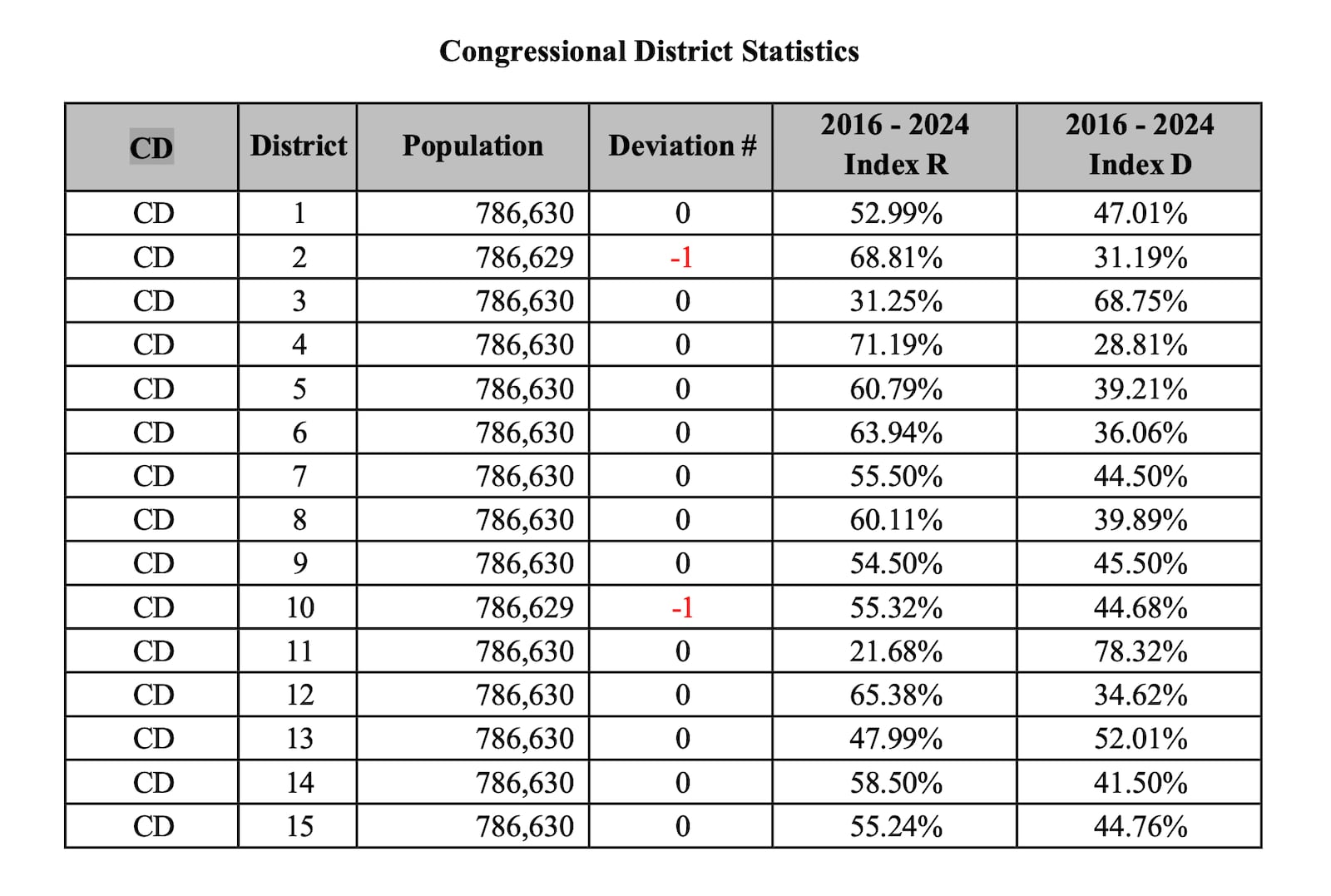This new plan, which came together after a week of backroom negotiations between legislative leaders on both sides of the aisle, is seen as a compromise between the two parties, as Democrats could have been steamrolled by a Republican majority vote in the legislature in November.
The Ohio Redistricting Commission will vote on this new proposal on Friday morning. Ohio Gov. Mike DeWine, who has one of seven votes on the council, told reporters Thursday that he’ll vote for it.
“The goal here was to get maps and get Democrats on board with a map,” DeWine said. “It would appear that that’s going to happen.”
The Ohio Redistricting Commission is made up of the governor, the auditor, the secretary of state, two individuals appointed by Republican statehouse leaders and two other individuals appointed by Democratic leaders. Republicans hold all of the statewide elected offices on the commission.
Senate Minority Leader Nickie Antonio, D-Lakewood, told reporters that the compromise was brokered through a broken system.
“We’re down to the clock, to the end of the 11th hour, looking at a map, trying to make a decision on what’s the best way forward for our congressional districts (and) trying to give a fair voice to the people of the state of Ohio in a system that works for politicians picking their people instead of the people picking their politicians,” she said.
Proposed district boundaries
Credit: Provided
Credit: Provided
The new plan would weaken Democratic chances in Ohio District 1, which currently ties the eastern half of Hamilton County with all of Warren County. Currently, the district narrowly favors Republican candidates, though its voters have elected U.S. Rep. Greg Landsman, D-Cincinnati, twice in a row.
OH-1, as proposed, would take a southern chunk of Hamilton County and combine it with all of Warren and Clinton counties. Its projected partisan index favors Republicans, calculated by statewide voting patterns from 2014 through 2024, 52% to 47%. It’s the second most competitive district, on paper.
The plan similarly dilutes Democratic voting power in Ohio District 9 in northeast Ohio, which was previously a toss-up district that has twice narrowly elected U.S. Rep. Marcy Kaptur, D-Toledo. The redistricting commission’s new proposal favors Republicans 54.5% to 45.5%.
In another toss-up district repeatedly won by Democrats — the Akron area’s Ohio District 13, held by U.S. Rep. Emilia Sykes, D-Akron — the commission’s plan strengthens Democrats’ hold with a 52% to 48% Democratic advantage. On paper, it’s the most competitive district in the state.
In each of those districts, Democrats will, for now, have the advantage of running incumbent candidates in the 2026 elections.
Credit: Provided
Credit: Provided
The remaining 12 districts in the state would be relatively unchanged, politically, under the plan. As before, the congressional districts centered on Columbus and Cleveland are still the state’s two Democratic strongholds, and the remainder of the districts strongly favor Republicans.
“From the Republican standpoint, I think if we have good candidates (and) run good campaigns, we potentially have 12 seats where we could be very competitive,” said Rep. Brian Stewart, R-Ashville. He characterized the ORC’s new proposal as even fairer than the state’s current map, evidenced by its bipartisan support.
In the Dayton area, Ohio District 10, long held by U.S. Rep. Mike Turner, R-Dayton, would maintain a sturdy 10-point Republican advantage.
One notable change is that Turner would pick up a portion of Butler County and no longer represent Springfield, which would be folded into the heavily Republican district OH-4, currently held by U.S. Rep. Jim Jordan, R-Urbana. OH-4 has a 71.2% Republican index.
Ohio District 15, which currently sprawls from Franklin County through Clark and Miami counties to Shelby County, is similarly strangely shaped in the new plan, except this time stopping in Miami County and instead spreading southward into Highland and Pickaway counties. Currently held by U.S. Rep. Mike Carey, R-Columbus, the new-look district would have a 55.2% Republican index and be the third most competitive district in the state.
National implications
Republicans had the option to wait out the clock until November. At that time, the Ohio Constitution would have given the legislature the power to enact whatever map it wanted with a simple majority vote, which Republicans could easily muster. That map would have to receive approval from the Ohio Supreme Court, which has a six-to-one Republican tilt.
However, national Democrats led by U.S. House Minority Leader Hakeem Jeffries, D-NY, had been positioning a referendum effort if Ohio Republicans unilaterally passed a map.
The backdrop to all of this political calculus is a high-stakes 2026 midterm election where Republicans’ narrow control of the U.S. House of Representatives is at stake. President Donald Trump has pressured GOP-controlled states to redraw their maps mid-decade to squeeze out more GOP seats, which prompted Democratic-controlled states across the country to follow suit.
Ohio, however, was obligated to change its congressional map ahead of the election, as the current plan was passed on a temporary basis because it didn’t have sufficient Democratic support.
Note: This is a developing story and will be updated as more information becomes available.
For more stories like this, sign up for our Ohio Politics newsletter. It’s free, curated, and delivered straight to your inbox every Thursday evening.
Avery Kreemer can be reached at 614-981-1422, on X, via email, or you can drop him a comment/tip with the survey below.
About the Author


